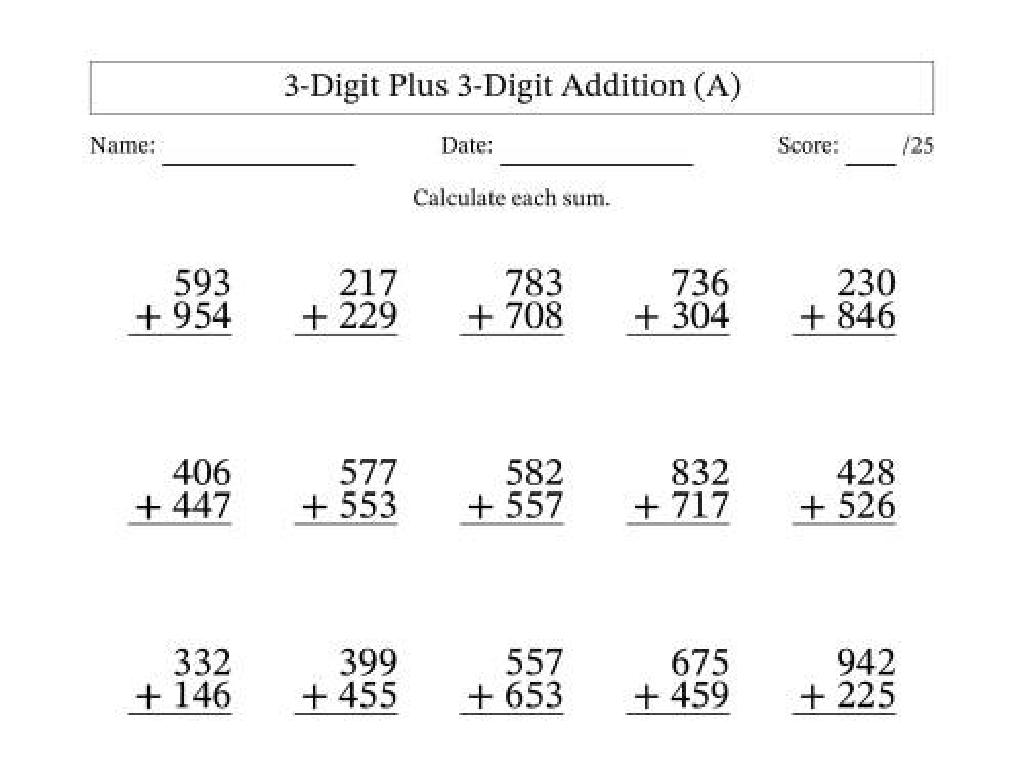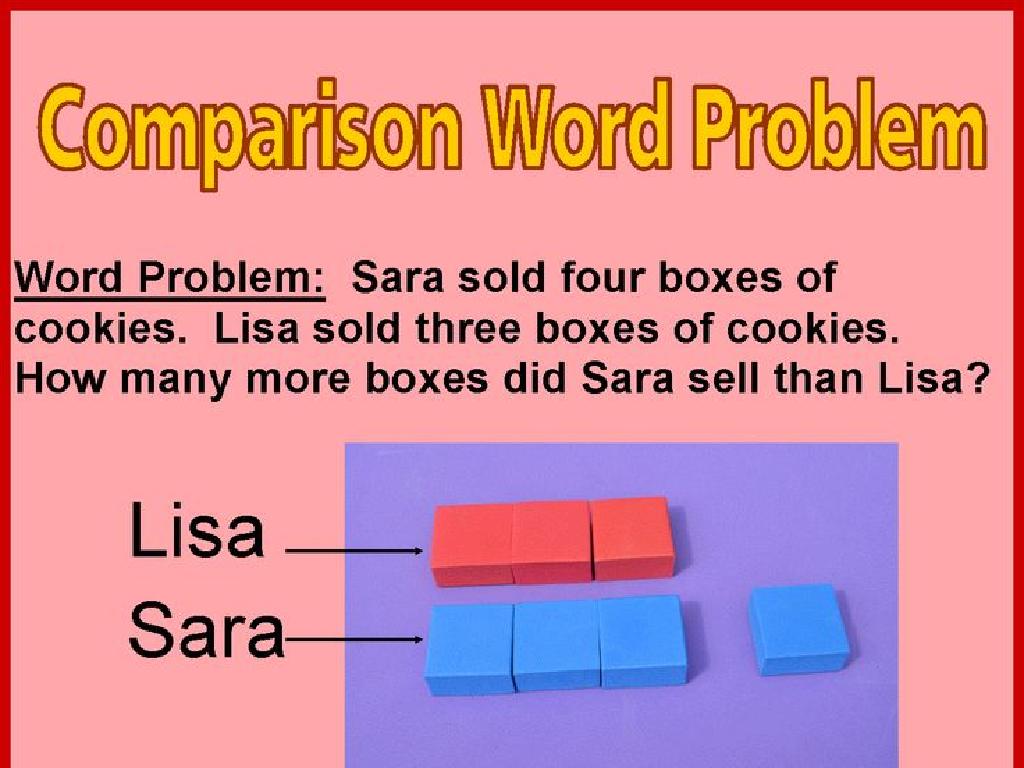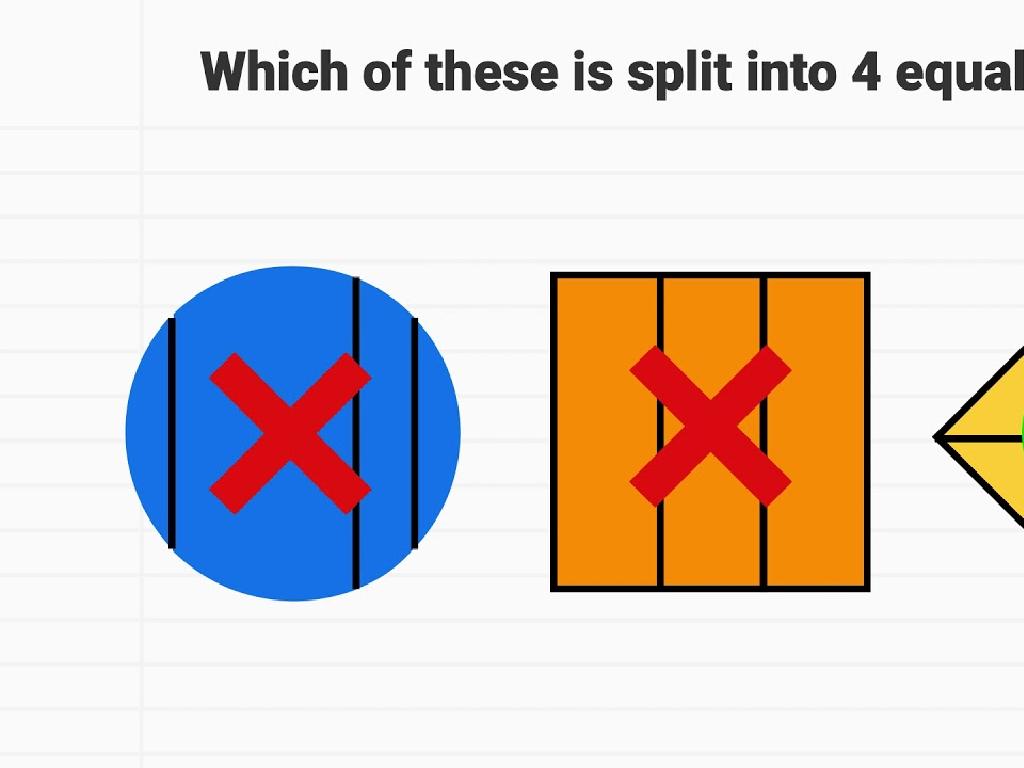Identify Sensory Details
Subject: Language arts
Grade: Fourth grade
Topic: Sensory Details
Please LOG IN to download the presentation. Access is available to registered users only.
View More Content
Welcome to Sensory Details!
– What are sensory details?
– Descriptions that appeal to our senses
– Explore the five senses
– Sight, sound, smell, taste, touch
– Sensory details in writing
– Make stories come alive for readers
– Examples in literature
– ‘The cinnamon buns smelled warm and sweet’
|
This slide introduces the concept of sensory details and their importance in writing. Sensory details are descriptive elements that pertain to the senses and are used to help the reader visualize or experience the story more vividly. Discuss each of the five senses and how writers use them to enrich their narratives. Provide examples from well-known children’s literature where sensory details are used effectively. Encourage students to think of their favorite books and the descriptive language that made the scenes memorable. This will set the foundation for them to use sensory details in their own writing.
Exploring Sensory Details
– What are sensory details?
– Descriptions that appeal to our senses
– Sensory details in books
– ‘The cinnamon buns smelled heavenly’ – engages our sense of smell
– Purpose of sensory details
– They make stories vivid and immersive
– Activity: Find sensory words
|
Sensory details are words or phrases that describe how things look, sound, smell, taste, or feel, and they are used to help the reader experience the story more fully. When discussing examples from literature, choose passages that clearly illustrate sensory language, such as descriptions of food that make you hungry or noises that make you feel like you’re in the story. Explain that writers use these details to create a rich, engaging experience for the reader. For the activity, have students pick a favorite story or poem and find words or phrases that appeal to the five senses. This will help them understand how sensory details work and why they’re important.
Exploring Sensory Details
– Sight: Visual details we see
– Colors, shapes, sizes, and distances
– Sound: Auditory details we hear
– Volume, pitch, rhythm of noises and voices
– Smell: Olfactory details we sniff
– Scents and odors that surround us
– Taste: Gustatory details we savor
– Flavors of food and drinks we consume
– Touch: Tactile details we feel
– Texture, temperature, and pressure
|
This slide introduces students to the concept of sensory details, which are descriptions linked to our five senses. Sensory details help us to create vivid images in our minds while reading or writing. For sight, discuss how visual elements like color and shape help us picture a scene. For sound, explore how noises can set a mood or signal action. Smell can evoke memories or reactions, while taste can describe experiences with food. Touch includes physical sensations that can describe an object or environment. Encourage students to think of examples from their experiences and how authors use these details to bring stories to life.
Exploring Sensory Details in Texts
– Spotting sensory details in reading
– Look for words that describe how things look, sound, smell, taste, or feel
– Practice with a sample paragraph
– Find and highlight words that appeal to the senses in the provided paragraph
– Discuss the senses involved
– Determine if the detail is visual, auditory, olfactory, gustatory, or tactile
– Enhance descriptive writing skills
|
This slide is aimed at helping students identify and understand sensory details in texts, which are descriptions that appeal to our senses and help us to imagine the scene being described. Begin by explaining how sensory details create vivid imagery and enhance the reading experience. During practice, provide a paragraph and guide students to highlight sensory words and phrases. Then, facilitate a discussion to classify these details according to the specific senses they appeal to. This exercise will not only improve their reading comprehension but also aid them in using sensory details in their own writing to make it more engaging and descriptive.
Using Sensory Details to Enliven Writing
– Add details for lively writing
– Use senses to describe scenes, like the sound of rain or the smell of cookies.
– ‘Show, don’t tell’ with imagery
– Instead of ‘It was scary,’ describe a ‘dark, creaking staircase’.
– Exercise: Enhance a sentence
– Take a simple sentence and add sensory words to paint a picture.
|
This slide introduces the concept of sensory details in writing to make stories more engaging and vivid. Encourage students to think about how they use their senses in real life and how this can be applied to their writing. Explain the difference between simply telling the reader something and showing it through detailed descriptions. For the exercise, provide a basic sentence and have students add sensory details to enhance it, such as ‘The dog ran’ becoming ‘The muddy dog sprinted through the wet grass, its fur damp with the scent of rain.’ This activity will help students practice and understand the importance of sensory details in writing.
Class Activity: Sensory Detail Hunt
– Find & list sensory details around you
– Work in pairs to share findings
– Discuss the importance of sensory details
– How do these details help us understand the experience?
– Reflect on how sensory details enhance writing
– Think about your favorite book and how the author uses sensory details.
|
This activity is designed to engage students in exploring their environment through the lens of sensory details. Students should use their senses to identify details around them, such as the sound of a clock ticking, the smell of lunch, or the color of the classroom walls. After gathering these details individually, they will pair up with a classmate to discuss their findings, promoting collaborative learning. The group discussion will focus on how sensory details add depth to our experiences and enhance storytelling. Encourage students to think about how authors use sensory details to bring stories to life and make readers feel like they are part of the narrative. Provide examples from well-known children’s books where sensory details are vivid. This will help students understand the importance of sensory details in writing.
Wrapping Up: Sensory Details
– Recap: What are sensory details?
– Sensory details help readers experience your story as if they were there.
– Homework: Craft a descriptive paragraph
– Describe a place or moment using sight, sound, smell, touch, and taste.
– Use all five senses in your writing
– Think about how each sense can paint a clearer picture for the reader.
– Share your sensory discoveries tomorrow
– Be prepared to discuss the sensory words you chose and why.
|
As we conclude today’s lesson on sensory details, remind students how these descriptive elements enhance writing by appealing to the five senses. For homework, they should write a paragraph describing a setting or event, making sure to include sensory details that bring their words to life. Encourage creativity and the use of vivid language. In the next class, students will have the opportunity to share their work, which will help reinforce their understanding of the concept and allow them to learn from each other’s descriptive choices.






